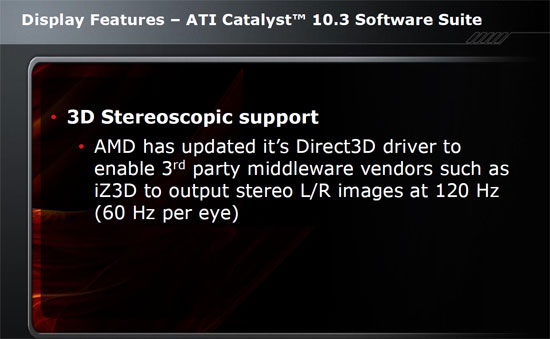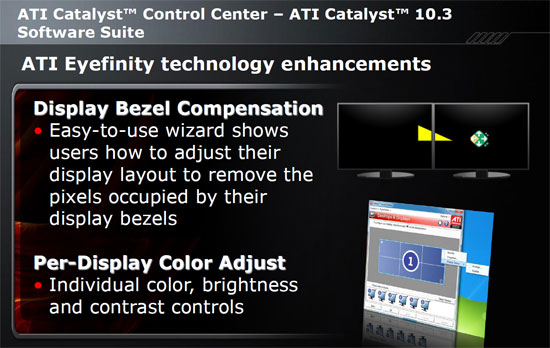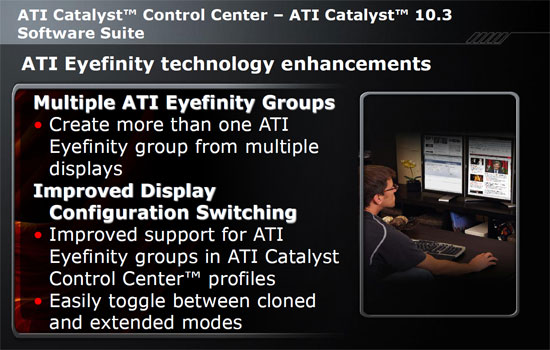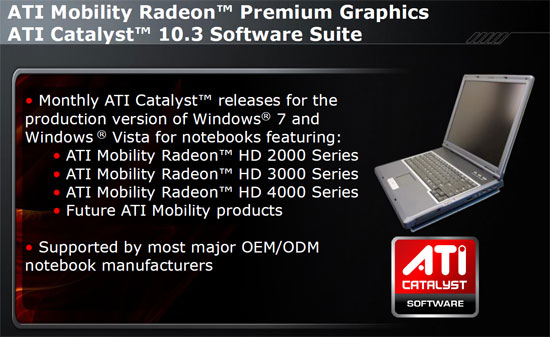ATI CATALYST 10.2 & 10.3 Driver Preview – Application Profiles
ATI CATALYST 10.3 Driver Features

For those of you ATI loyalists that have been envious of a certain companies 3D Vision. The wait for your turn is nearly over! Coming in March with Catalyst 10.3 ATI has enabled their Direct3D driver to allow third party vendors to output a 120Hz L/R stereo image. Utilizing the frame buffer on the gpu it will support Quad buffering. Quad-buffering is the ability to render into left and right front and back buffers independently. The front left and front right buffers displaying the stereo images can be swapped in sync with shutterglasses while the back left and back right buffers are being updated – giving a smooth stereoscopic display. The frame buffer will store 2 frames per eye at any given time for a total of 4 frames.

Catalyst 10.3 software suite now allows you to change the color configuration of just one of the panels in an Eyefinity display. Also new in Catalyst 10.3 is the ability to compensate for the display bezel. This will allow the images to appear much more fluid. You will no longer see a mismatch in certain images.

Now you will be able to configure multiple Eyefinity display groups. Setting up configurations of 3 groups of 2 panels each or 2 groups of 3 panels each is now possible. It will also become easier to switch between the configurations from within the new Catalyst Control Center.

As the above slide states that the Catalyst 10.3 software suite will begin to support the Radeon Mobility chipsets. This isn’t the first time ATI is doing this. Several years ago ATI gave OEM manufacturers the opportunity to opt in to the program. Now it is being done a little different, OEM manufacturers have to opt out of the program if they don’t want Catalyst 10.3 to be run on their systems. Currently (at the time of this writing) only three companies have opted out of the program, Sony, Toshiba, and Panasonic.

Comments are closed.